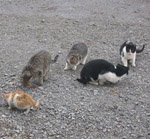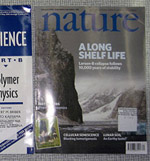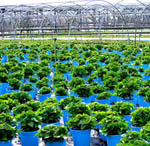The danger of restoring native plants using non-local sources
 Plants,
Plants,  Restoration
Restoration  American Beachgrass (Ammophila breviligulata) growing on the western shore of Lake Michigan.
American Beachgrass (Ammophila breviligulata) growing on the western shore of Lake Michigan.
A new study on ecological restoration efforts in Minnesota illustrates the dangers of establishing native plant species using non-local sources.
For the last 30 years, organizations and landowners have been working to restore native vegetation to dunes at Park Point along the western shore of Lake Superior. At first glance, it might not seem like such a big deal that these projects have been planting American beachgrass in Minnesota using propagules from source populations in Michigan.
But the study led by Rebecca Holmstrom found evidence that the Michigan plants differ genetically from a Minnesota population already existing in the area, and this gives the non-local beachgrass a competitive advantage.
The researchers compared the Michigan and Minnesota populations growing in the wild at Park Point as well as plots planted in experimental gardens. They found that Amrican beachgrass from Michigan was 1.8 times taller than plants from the local population and produced 1.5 times more pollen grains and 2.7 times more florets. The non-local beachgrass also exhibited higher survival rates and grew faster.
This is problematic because the local population of beachgrass is highly threatened - the Park Point site is home to the last remaining local population in the state. So establishing the Michigan plants may further endanger the genetically distinct Minnesota population.
Even more worrying, a companion study published in 2008 indicates that the non-local population may have very low genetic diversity. This in turn could limit its ability to adapt to future environmental change. The authors point out the irony of the situation:
"Michigan plants may out-compete the local plants because of their higher survival rates, more rapid growth including vegetative spread via rhizomes, and larger overall size. Ultimately, this may mean that plants in the threatened Minnesota population will be displaced by a genetically depauperate but very robust ecotype from Michigan."
Breeding between the two populations presents another potential negative outcome. An introduction of genes from the Michigan plants could alter the traits that the Minnesota population has developed over time to adapt to local conditions. In this case, the study results suggest that this outcome is unlikely given that differences in flowering time limit the potential gene flow between local and non-local populations.
Clearly, habitat restoration faces a complex set of challenges This study illustrates the potential negative consequences of conducting restoration with an incomplete understanding of the ecological and genetic context.
--Reviewed by Rob Goldstein
Holmstrom, R., Etterson, J., & Schimpf, D. (2009). Dune Restoration Introduces Genetically Distinct American Beachgrass, , into a Threatened Local Population Restoration Ecology DOI: 10.1111/j.1526-100X.2009.00593.x




Reader Comments